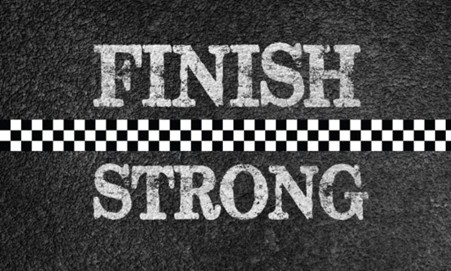Look, I get it. It’s December. The holiday music is playing, everyone’s talking about their time off, and there’s this weird energy in the air that whispers, “Just coast until January.”
But here’s the thing, while everyone else is mentally checking out, I have got 7 new business meetings on my calendar and a delivery to execute. And that, my friend, is exactly how you win.

The December Fallacy
I remember my third year in sales. December rolled around and my manager pulled me aside. “Garret,” he said, “most reps treat December like a victory lap. But the ones who become legends? They treat it like the opening sprint of the next race.”
I didn’t fully get it then. I do now.
Here’s what nobody tells you about December: everyone else slows down, but business doesn’t stop. Companies still have budgets to spend. Decision-makers are still at their desks. Problems still need solving. The only difference is that half your competition has already mentally moved on to eggnog and New Year’s resolutions.
That’s your advantage. When Others Zig, You Zag
I once closed a six-figure deal on December 23rd. Everyone thought I was crazy for even trying. “Nobody buys right before Christmas,” they said.
But the client had a problem that wasn’t taking a holiday. They had budget that expired on December 31st. And while my competitors were out of office, I was the only one who showed up, proposal in hand, ready to solve their problem. Guess who got the deal?
I have got 7 meetings lined up. That’s not luck. That’s hustle. That’s me understanding that while the calendar says December, opportunity doesn’t know what month it is.
The Delivery Mindset
And I am not just prospecting. I have got a delivery in motion. That’s the complete package right there. We are acquiring AND we are executing. That’s the kind of momentum that compounds.
Here’s something I learned the hard way: delivery isn’t just about fulfilling a contract. It’s your best prospecting tool. When you deliver in December while everyone else is checked out, you become the vendor who “doesn’t disappear during the holidays.” That reputation is worth its weight in gold.
I had a client once tell me, “Garret, the reason I keep working with you is because that time we had an issue on December 27th, you picked up the phone. Your competitor didn’t answer until January 4th.”
Seven days. That’s all it took to cement a relationship that’s lasted years.
The January Advantage
Let me paint you a picture of January 2nd. Everyone comes back to the office, shakes off the holiday fog, and starts their “New Year, New Me” sales push.
| They’re making prospecting lists. |
| They’re crafting emails. |
| They’re trying to remember what they were working on three weeks ago. |
Meanwhile, you’re not starting, you’re continuing.
Those 7 meetings I am running in the 1st week of December? Some will close in December. Others will close in January. But all of them will be further along than anything my competitors are working on when they stagger back to their desks with a coffee in hand and a to-do list that starts at zero.
I will be closing deals while they’re still scheduling discovery calls.
That’s not working harder. That’s working smarter.
The Mental Game
I won’t lie to you, it’s tough to stay locked in when the world around you is winding down. You’ll see the out-of-office replies. You’ll hear colleagues talking about their holiday plans. There’s this gravitational pull toward doing less.
Fight it.
Not because you’re a workaholic or because you can’t enjoy the holidays. Fight it because you know something they don’t: this is when the real separation happens.
Champions aren’t made in the easy months when everyone’s hustling. They’re made in the months when most people quit. December is one of those months.
Your Week Ahead
So I have got 7 meetings and a delivery. Here’s how I’d think about this week:
• Own those meetings. Show up with more energy than your prospects expect in December. Be the bright spot in their day. Solve their problems before they even fully articulate them. When everyone else is phoning it in, you be the one who shows up fully present.
• Execute that delivery flawlessly. Don’t let the holiday timeline be an excuse for anything less than excellent. My client will remember how I showed up when it mattered.
• Document everything. Take notes on what I am learning in these conversations. I am gathering intelligence while my competition is offline. That knowledge gap is real, and it’s valuable.
The Real Win
What is the real win by getting a head start on your competition?
You’re not just setting yourself up for a strong January. You’re building a reputation as someone who doesn’t make excuses. Someone who delivers regardless of the calendar. Someone who’s there when it counts.
That reputation? It follows you. It compounds. It becomes your brand.
Years from now, when clients think of you, they won’t remember that you took December off. They’ll remember that you were there when they needed you. That you didn’t slow down when everyone else did.

So keep that energy high. Run meetings like they’re the most important conversations of the year, because for all you know, they are. Nail that delivery. And when January 2nd rolls around and everyone else is just getting started, you’ll already be miles ahead. To learn more about the importance of having a strong close to the year strong, click here.
December doesn’t mean downshift. It means separate yourself from the pack.
Now go get it.
– Garret
Contact KONA on 1300 611 288 or send us an email to info@kona.com.au
Author – Garret Norris – https://www.linkedin.com/in/garretnorris/














































































































